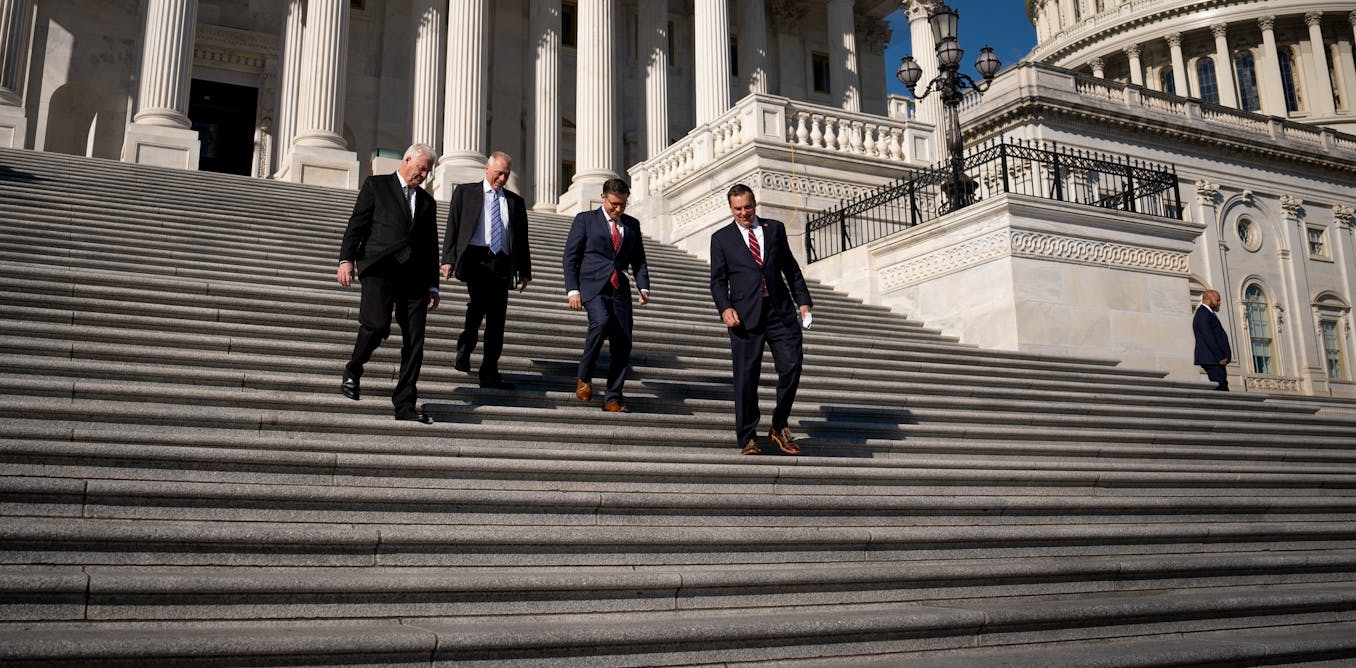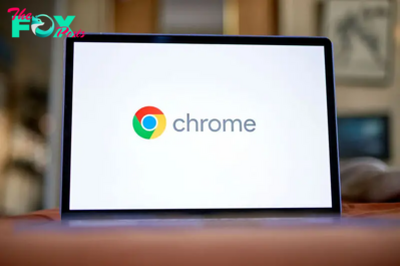Business
Stop Looking for Your Forever Home
My house is extremely ugly. It looks like someone built an evangelical mega-church in a residential neighborhood and then tried to turn it into a single-family home by putting in cheap windows and scallop vinyl shingles.
If you don’t believe me that it’s ugly, here is proof: In one of the hottest housing markets in recent History, it was on the market for nine months before we made a lowball offer in early 2023.
There are many good things about it: it’s spacious, well-located, full of light, and it didn’t need a whole lot of work. Still, when a friend recently asked me if it was my “forever home,” I got a pit of anxiety in my stomach. Live in the mega-church? Forever? How could I? But in this housing market, how could I afford to move anywhere else?
The concept of the “forever home” has become extremely popular in the last 15 years or so—even before the rise of the HGTV show, Property Brothers: Forever Home. The idea is that this is the home you’ll raise your children in, one that’s either perfect or that you will spend a lot of money on to make perfect, one that will fulfill all your hopes and dreams. It is the opposite of a “starter home,” which may not exist anymore in today’s real-estate market, and is sometimes interchangeable with a “dream home.”
It’s a relatively new concept. The term was barely used until the mid-2000s, according to Google’s Ngram, which searches how many times a phrase is found in printed sources. References to the “forever home” started increasing exponentially in 2010, and today the term is ubiquitous —it was used 5,630 times in U.S. for-sale listings in January, according to a Zillow analysis.
The spike in its use traces to a time when the U.S. economy was still emerging from the Great Recession. The housing market was in rough shape, with fewer homes being sold and prices still declining. The term “forever home” may have gained popularity among real-estate agents as a way to convince people that the resale value of a house didn’t necessarily matter, says Matthew Lasner, a historian of the built environment who is a professor at Hunter College. “I think it is about convincing people that at a time of low underwater prices, crazy high prices, or wildly fluctuating prices—all of which we’ve seen in the past 15 years—it still makes sense to buy ‘now,’” he says.
After all, the big reason many Americans have bought a home in the last 50 years is because they saw it as a good investment. You could get a government-backed mortgage, favorable tax treatment, and sit back as your house grew in value. Homeownership, the saying goes, is the best way to create generational wealth in America. But that wasn’t the case in the years between 2007 and 2011, when prices actually fell—and when the term “forever home” began taking off.
The idea of not worrying too much about the resale value of a house probably made sense in 2010. There was no way to know where the market was going, and there were other factors that were more important than resale value at the time, says Lasner. If people liked the house, the neighborhood, and could afford it, they could think of their house as a “forever home,” and not dwell too much on whether the market was going to continue tanking.
But thinking of houses as “forever homes” has become much less useful since 2020, as prices have skyrocketed and housing inventory disappeared. If, in 2010, it was a way to reassure people who were buying a house in an unpredictable market, it’s since morphed into a way to goad people into trying to find a “perfect” home—and spend more money than they should on it. The idea of finding your “forever home” puts into coNFLict two glaring realities of American housing today: there is a vast shortage of housing right now, and still people tie much of their self-worth to what their house looks like.
Construction for single-family homes slowed significantly after the Great Recession, and there are about 7.2 million fewer homes than are needed in America today. This shortage is causing prices to climb at a time of rising interest rates, which means people are having to pay more for less.
“There’s so much information out there as far as what a perfect house looks like, everyone thinks they deserve one,” says Liz Brown, a Virginia realtor who says that she has to constantly lower clients’ expectations when they first start shopping. It might have been a little easier to find a “perfect” house in, say, 2017, Brown says, when she could show clients 30 houses in their price range and they would have liked 10. Now, she says, there’s nothing to even look at, and when a great home pops up, it’s gone in a day to someone paying cash.
Clients tell Brown they want to buy a home and raise their kids in it, just like their parents did, she says, without realizing how much harder that is right now. In 2022, the median sale price for a single-family home was 5.6 times higher than the median household income, higher than any point on record dating back to the 1970s, according to a 2024 report from the Harvard Joint Center for Housing Studies. Still, Brown says, her clients are hesitant to plan to live in a house for only 3 to 5 years and then sell it and move on—perhaps because anyone who waited to buy a house until after 2020 has learned just how high prices or interest rates can suddenly go, pricing them out of the market.
As a result, people are moving less and less. In December 2023, the average American homeowner had lived in their house for 11.9 years, up from 6.5 years in December 2005, according to data crunched by the home-listings site Redfin. This is partly because nearly two-thirds of Americans have a sub-4% mortgage rate and don’t want to lose it. But even before rates plummeted to historic lows, Americans had been moving less than they used to. From 1945 to 1990, roughly 15% to 20% of Americans moved every year. That share has been steadily declining every year since, and now stands at around 10%.
I’m not arguing that the only reason Americans don’t move is because they’re holding out for their forever home, but searching for perfection certainly doesn’t help. A survey commissioned by the moving company Mayflower in 2022 found that 81% of people said that finding their “perfect forever home” was the most important factor in deciding to buy.
When housing prices make up such a large share of Americans’ income, it’s hard to blame people for wanting to put all their money into something “perfect.” The rise of HGTV and Instagram have shown us what beautiful homes can look like—and make it seem like you can turn an ugly house into a dream home in the course of 30 minutes. “It’s about the photographic nature of culture in the age of the Internet,” says Lasner, the Hunter College professor.
Real estate didn’t used to be so visual. It wasn’t until the Great Recession that agents began to frequently “stage” houses to sell them, replacing the owners’ belongings and decorations with stuff that can help potential sellers envision themselves living there, Lasner says. “If your parents bought a house in the 1980s, they didn’t pull up a set of photos. Their real estate agent probably said, ‘here’s a house in a neighborhood,’ and they went to the open house but certainly no one was changing furniture or removing Travel mementos,” Lasner says. My own parents tell me of running around to different towns and neighborhoods whenever a house in their price range was listed; often someone would have gotten there before them and already written a check to secure the place. The home they ended up with only had one bathroom; my grandparents told them they’d never ever get back what they put into it. (It is now worth roughly 17 times what they bought it for.)
I had been saving to buy a house for so long that I certainly had dreams of what it would look like when I finally bought it. It would have a front porch and an in-law suite and space for a vegetable garden; it would be walking distance from coffee shops and restaurants, it would be on a quiet street and I would be able to look out at least one window and not see another house. In an ideal world, it would be blue.
But after looking at dozens of houses in-person in 2022 and 2023, and hundreds more on Zillow, my criteria changed. I was spending a lot of time and energy looking for a house I loved, all while realizing that if I spent what it would cost to buy my “forever” home in this market, I’d have gigantic house payments until I died. So when we saw a house that had been on the market for months that wasn’t horrible, and when we calculated just how much money we’d save by not writing a rent check anymore, we put in an offer. I don’t know if we’ll live here for five years or 50, and I’m trying to be okay with that.
Maybe that type of uncertainty is fine. “I bristle at the idea of forever anything,” says Katie Hawkins-Gaar, a blogger who married young and bought her “forever home” in St. Petersburg, Fla. in 2015. When her husband died suddenly in 2017, Hawkins-Gaar had to come to terms with the idea that she was not going to have the life she thought she was. What she went through was devastating—but losing her forever home turned out okay. She met someone else, moved somewhere else, and now has a toddler. But she doesn’t think of her family’s current house as her “forever home,” either, even though they own it. She thought she had a forever marriage, she says, and life taught her otherwise. Maybe it’s more Healthy to just plan for right now. “It’s good to keep an open mind no matter what your situation in life,” she says, “if we approach more things as, ‘this feels good for this point in my life,’ it opens more opportunities for us to check in.’”
Besides, as I’ve learned, eschewing the term “forever home” can be a good way to save money. A contractor recently looked at the duct work that had been installed in our attic and was not circulating air correctly. He gave us two options: we could do an easy fix for $1,500, or, he said, “if this is your forever home,” we could tear out the duct work and put in a new system for $40,000.
We chose the cheaper option. Nothing is forever.
-

 Business1d ago
Business1d agoUS House passes measure that could punish nonprofits Treasury Department decides are ‘terrorist’
-

 Business1d ago
Business1d agoFast fashion may seem cheap, but it’s taking a costly toll on the planet − and on millions of young customers
-

 Business2d ago
Business2d agoNew Information: These HV Big Lots Are Now Staying Open
-

 Business2d ago
Business2d agoBrush Fire Rages On Near Butternut In Great Barrington, MA
-

 Business4d ago
Business4d agoCarbon offsets can help bring energy efficiency to low-income Americans − our Nashville data shows it could be a win for everyone
-

 Business4d ago
Business4d agoWorkplace diversity training programs are everywhere, but their effectiveness varies widely
-

 Business4d ago
Business4d agoFirm bosses urged to make use of Welsh language to revitalise rural economic system
-

 Business5d ago
Business5d agoDonor-advised funds are drawing a lot of assets besides cash – taking a bigger bite out of tax revenue than other kinds of charitable giving


























